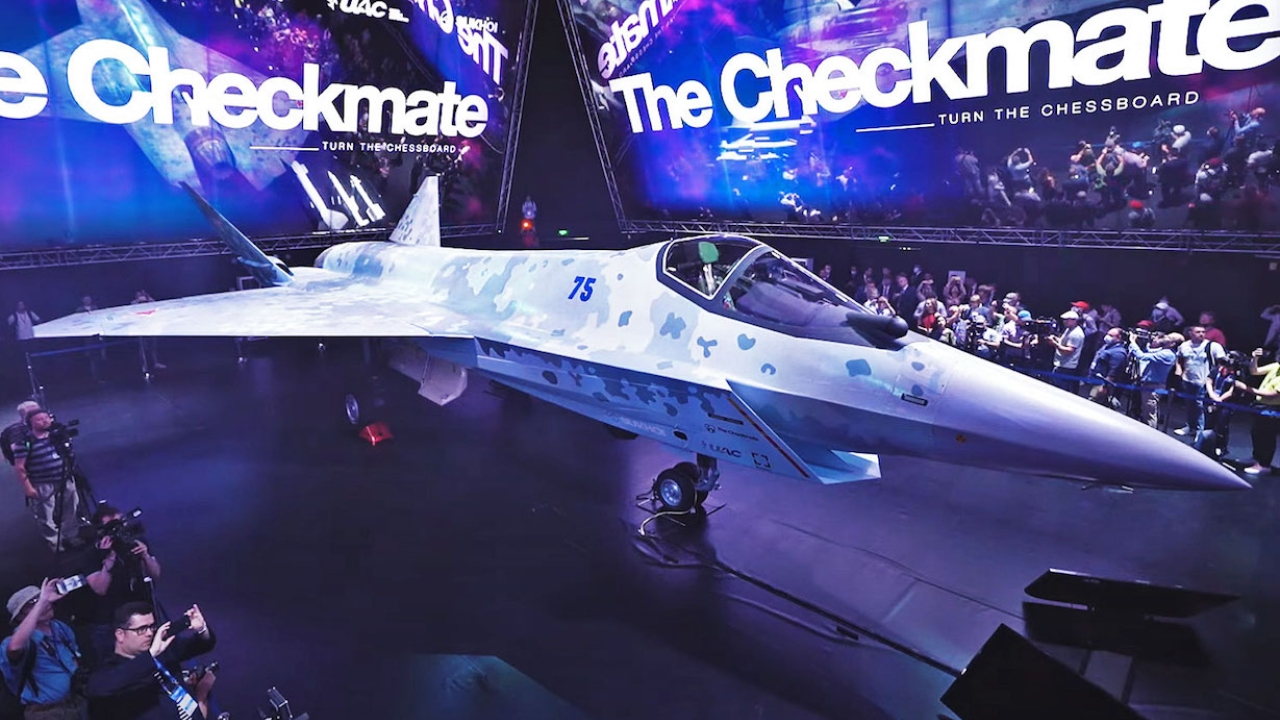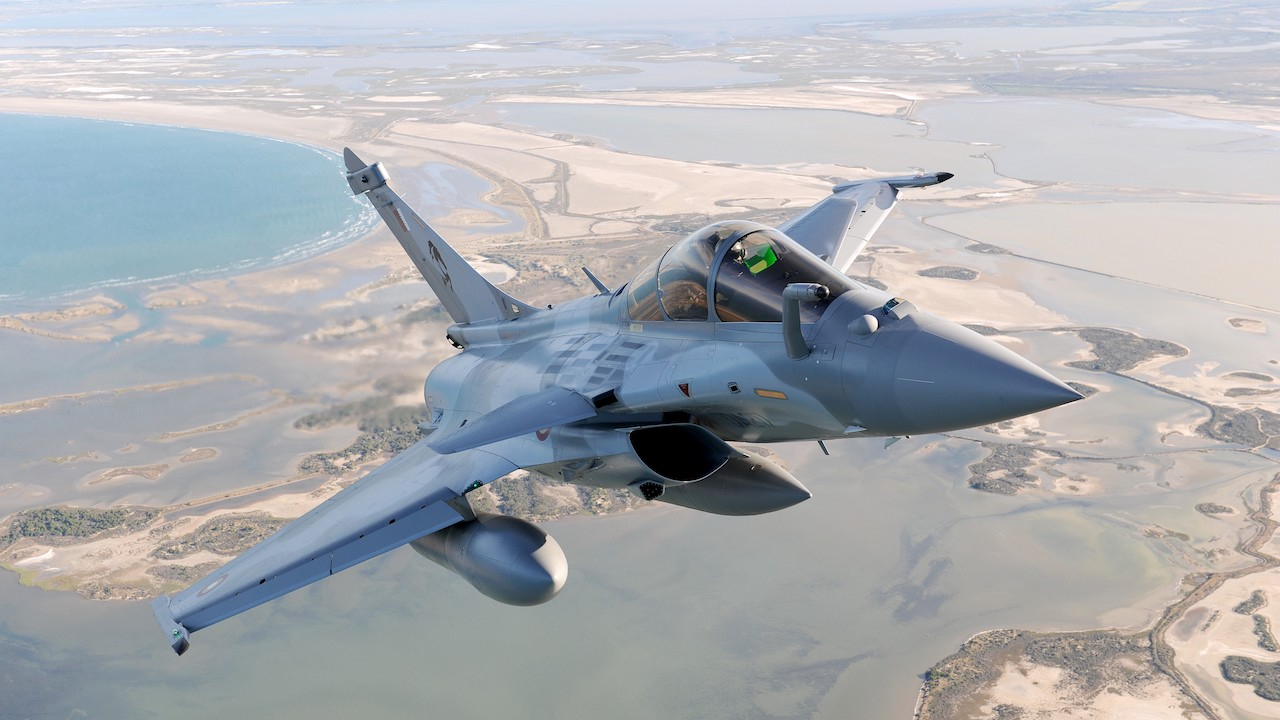Is it Checkmate… or just a smart chess move?
Speculation has begun that the UAE has, once again, revived its interest in acquiring a combat aircraft of Russian origin.

Crowd-pleaser: Sukhoi’s Checkmate attracted a great deal of interest at MAKS, but there is doubt as to whether it’s even a real aircraft programme! Picture: ROSTEC.
Russia’s United Aircraft Corporation (UAC) and the Sukhoi Aircraft Company revealed a new single-engine stealth fighter at the MAKS international air show near Moscow earlier this year.
The aircraft, named the Checkmate, was unveiled in a high-profile ceremony and was even presented to Russian president Vladimir Putin.
However, it was the posing for photographs by uniformed UAE air force officers as they examined the new fighter that sparked fevered speculation.
The UAE has previously shown interest in Russian fighters and reportedly came close to acquiring the SU-35 in 2017. There were suggestions at the time that the order would be for “more than 10” aircraft – probably for use as dedicated aggressor squadrons.
In that same year, at the International Defence Exhibition and Conference (IDEX) exhibition in Abu Dhabi, the UAE signed a wide-ranging agreement with Russia signalling increased defence cooperation. This was also said to include co-development of a light fighter.
In reality, this probably meant a small investment on the UAE’s part in return for technology transfer from Russia’s light multi-function frontal aircraft (LMFS) lightweight fighter project.
Some more recent reports have suggested that there has been direct cooperation between the UAE and Russia on the development of a new lightweight fighter, particularly in the light of the emirates’ difficulties in securing the delivery of F-35s from the US.
Military Watch Magazine even suggested that the Checkmate had been developed to meet the UAE’s specific requirements and that Russia already had an order for the fighter. This was, however, contradicted by UAC CEO, Yuri Slyusar, who said only that partners from the Middle East, southeast Asia and Latin America were interested in the new fighter [Checkmate]. No firm orders for the aircraft were announced or claimed.
There are many reasons that a UAE order for the Checkmate seems unlikely. The aircraft is a relatively low-end fighter aimed at the cheaper section of the export market. Slyusar described it as a “single-engined fifth-generation fighter offered at reasonable prices that most countries could afford”.
This description does not fit the UAE, which has a serious, full-spectrum air force that procures only top-of-the-line aircraft and equipment.
The UAE is keen to procure the F-35 and was in negotiations with the US even before it normalised relations with Israel last year.
Though the incoming Biden administration approved the sale of 50 F-35s to the UAE in April, there are still some obstacles to be overcome before that sale is finalised. There have been setbacks due to US domestic political opposition, Israeli hostility to the proposed deal, and even to the UAE’s growing links with China and, particularly, Huawei’s involvement in its telecommunications networks.
The purchase of equipment from Russia could be a deal breaker.
The UAE is all too aware of what happened when Turkey tried to pursue a dual-track procurement strategy, buying the S-400 Russian-made air defence system alongside the F-35. The US repossessed the handful of aircraft that had been delivered for training in America and removed Turkey from the F-35 programme. The Turkish Air Force lost the centrepiece of its future plans while the country’s industry saw production work on the aircraft axed.
The F-35 is a mature, proven, platform that has already won a reputation as the most effective fast-jet combat aircraft in service, with capabilities unmatched by any other competitor. It is already in production and the global fleet has amassed more than 250,000 flying hours.
It is also interoperable with the aircraft and equipment already used by the UAE Air Force and its allies, whereas the ‘Checkmate’ is an unproven and altogether more modest platform that is much less desirable.
It therefore seems likely that any interest shown in Russian fighters by the UAE is little more than a negotiating tactic aimed at wringing better pricing and other concessions from the US.
Finally, there is the vexed question of whether the Checkmate is a real programme, rather than just a marketing tactic and an attempt to grab attention.
When the aircraft was revealed at MAKS 2021, it was immediately apparent that the one on display was no more than a mock-up incorporating some parts from a crashed T.50 prototype – a piece of theatre that is a long way from production hardware in terms of both timescale and investment.
Stay up to date
Subscribe to the free Times Aerospace newsletter and receive the latest content every week. We'll never share your email address.


